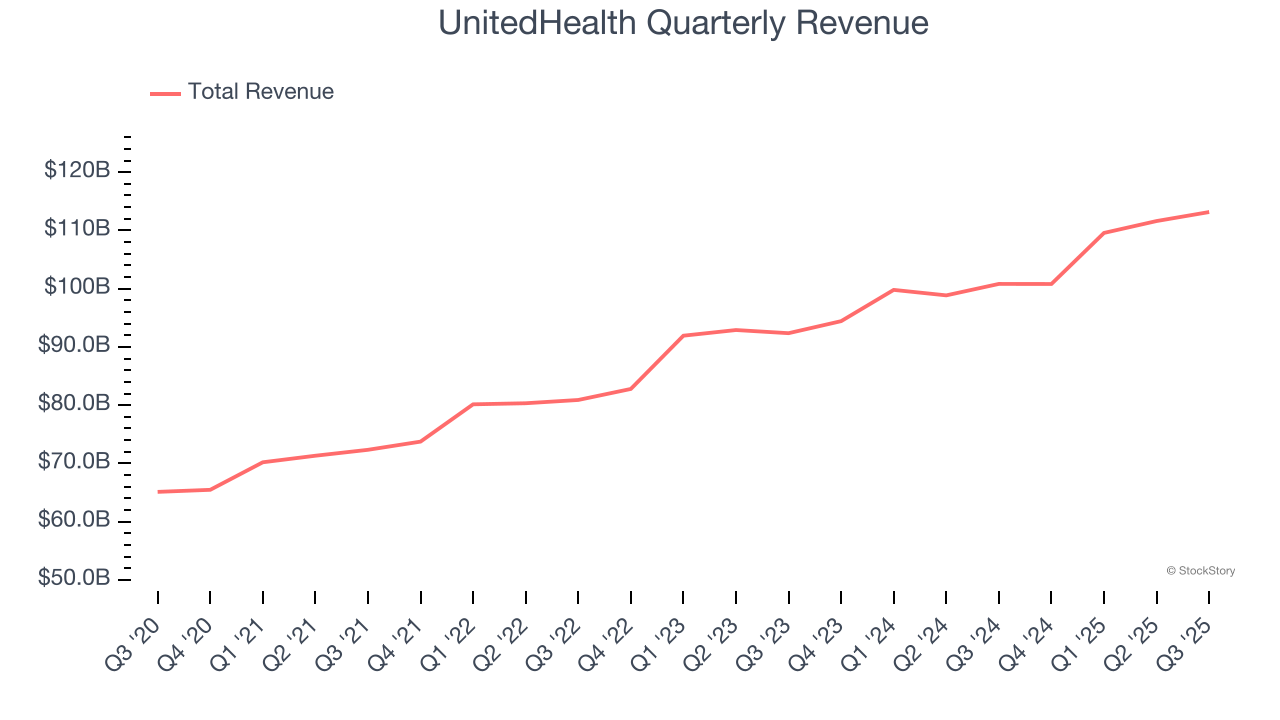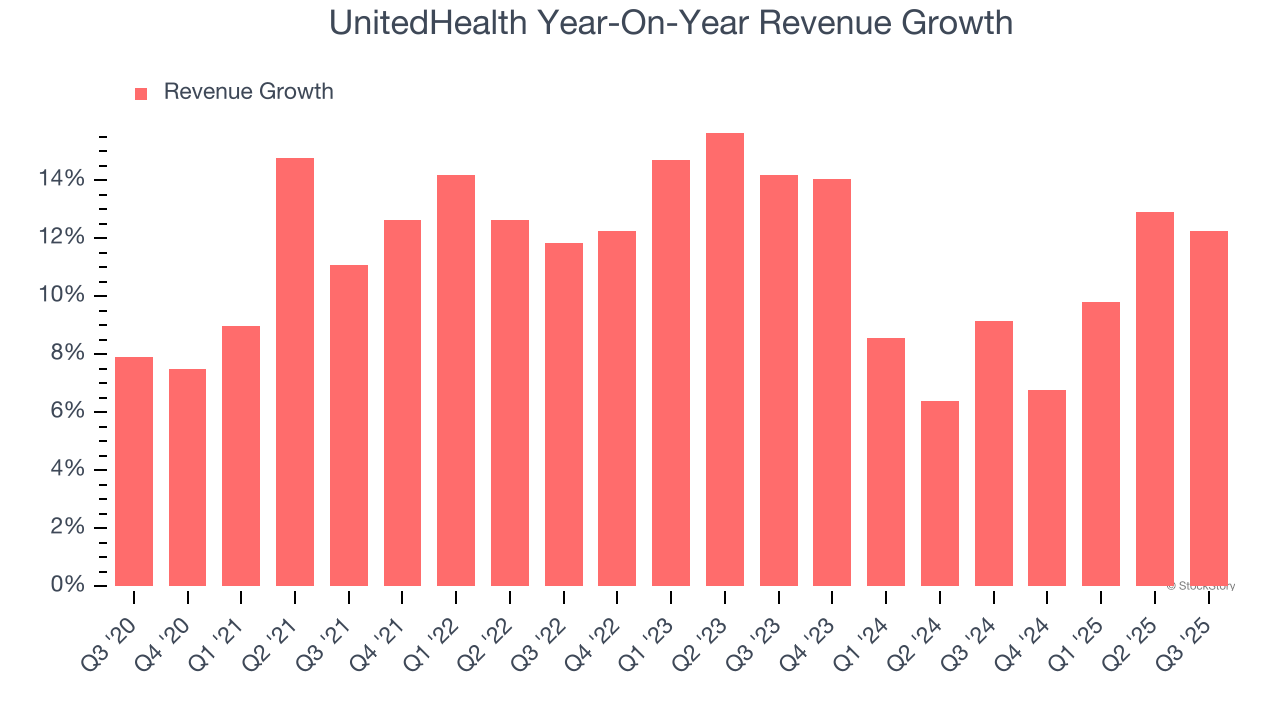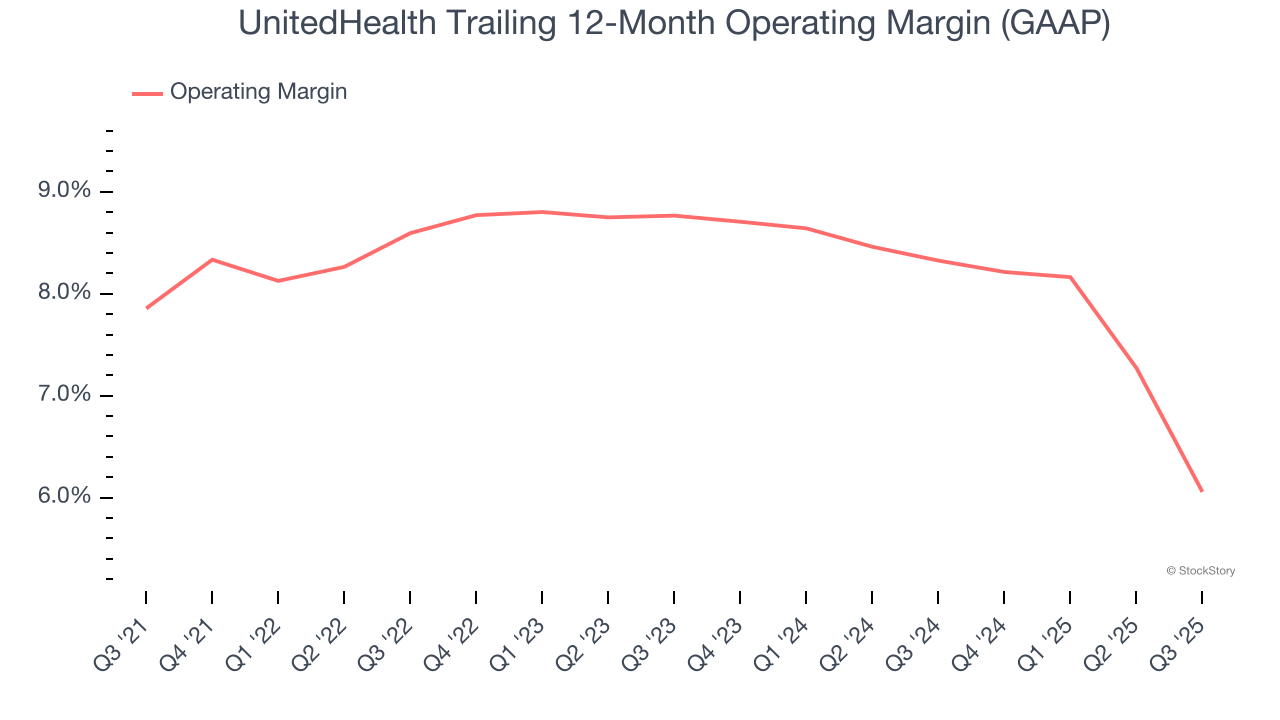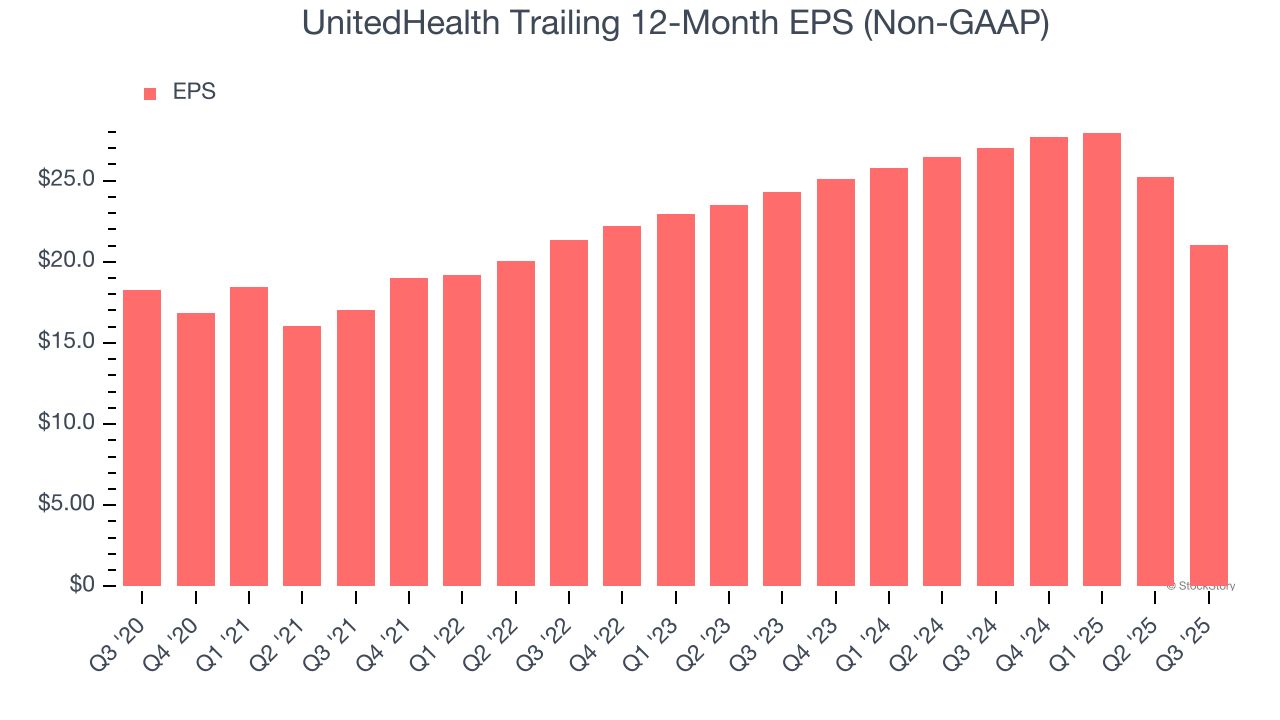
Health insurance company UnitedHealth (NYSE: UNH) met Wall Street’s revenue expectations in Q3 CY2025, with sales up 12.2% year on year to $113.2 billion. Its non-GAAP profit of $2.92 per share was 4% above analysts’ consensus estimates.
Is now the time to buy UnitedHealth? Find out by accessing our full research report, it’s free for active Edge members.
UnitedHealth (UNH) Q3 CY2025 Highlights:
- Revenue: $113.2 billion vs analyst estimates of $113.3 billion (12.2% year-on-year growth, in line)
- Adjusted EPS: $2.92 vs analyst estimates of $2.81 (4% beat)
- Adjusted EBITDA: $5.64 billion vs analyst estimates of $5.18 billion (5% margin, 8.9% beat)
- Management raised its full-year Adjusted EPS guidance to $16.25 at the midpoint, a 1.6% increase
- Operating Margin: 3.8%, down from 8.6% in the same quarter last year
- Free Cash Flow Margin: 4.5%, down from 12.8% in the same quarter last year
- Market Capitalization: $331.5 billion
“We remain focused on strengthening performance and positioning for durable and accelerating growth in 2026 and beyond, and our results this quarter reflect solid execution toward that goal,” said Stephen Hemsley, chief executive officer of UnitedHealth Group.
Company Overview
With over 100 million people served across its various businesses and a workforce of more than 400,000, UnitedHealth Group (NYSE: UNH) operates a health insurance business and Optum, a healthcare services division that provides everything from pharmacy benefits to primary care.
Revenue Growth
Examining a company’s long-term performance can provide clues about its quality. Any business can experience short-term success, but top-performing ones enjoy sustained growth for years. Luckily, UnitedHealth’s sales grew at a decent 11.5% compounded annual growth rate over the last five years. Its growth was slightly above the average healthcare company and shows its offerings resonate with customers.

We at StockStory place the most emphasis on long-term growth, but within healthcare, a half-decade historical view may miss recent innovations or disruptive industry trends. UnitedHealth’s annualized revenue growth of 9.9% over the last two years is below its five-year trend, but we still think the results were respectable. 
This quarter, UnitedHealth’s year-on-year revenue growth was 12.2%, and its $113.2 billion of revenue was in line with Wall Street’s estimates.
Looking ahead, sell-side analysts expect revenue to grow 6.1% over the next 12 months, a deceleration versus the last two years. We still think its growth trajectory is satisfactory given its scale and implies the market is forecasting success for its products and services.
Unless you’ve been living under a rock, it should be obvious by now that generative AI is going to have a huge impact on how large corporations do business. While Nvidia and AMD are trading close to all-time highs, we prefer a lesser-known (but still profitable) stock benefiting from the rise of AI. Click here to access our free report one of our favorites growth stories.
Operating Margin
Operating margin is an important measure of profitability as it shows the portion of revenue left after accounting for all core expenses – everything from the cost of goods sold to advertising and wages. It’s also useful for comparing profitability across companies with different levels of debt and tax rates because it excludes interest and taxes.
UnitedHealth was profitable over the last five years but held back by its large cost base. Its average operating margin of 7.8% was weak for a healthcare business.
Analyzing the trend in its profitability, UnitedHealth’s operating margin decreased by 1.8 percentage points over the last five years. The company’s two-year trajectory also shows it failed to get its profitability back to the peak as its margin fell by 2.7 percentage points. We still like UnitedHealth but would like to see some improvement in the future.

This quarter, UnitedHealth generated an operating margin profit margin of 3.8%, down 4.8 percentage points year on year. This contraction shows it was less efficient because its expenses grew faster than its revenue.
Earnings Per Share
Revenue trends explain a company’s historical growth, but the long-term change in earnings per share (EPS) points to the profitability of that growth – for example, a company could inflate its sales through excessive spending on advertising and promotions.
UnitedHealth’s EPS grew at an unimpressive 2.9% compounded annual growth rate over the last five years, lower than its 11.5% annualized revenue growth. This tells us the company became less profitable on a per-share basis as it expanded due to non-fundamental factors such as interest expenses and taxes.

We can take a deeper look into UnitedHealth’s earnings to better understand the drivers of its performance. As we mentioned earlier, UnitedHealth’s operating margin declined by 1.8 percentage points over the last five years. This was the most relevant factor (aside from the revenue impact) behind its lower earnings; interest expenses and taxes can also affect EPS but don’t tell us as much about a company’s fundamentals.
In Q3, UnitedHealth reported adjusted EPS of $2.92, down from $7.15 in the same quarter last year. Despite falling year on year, this print beat analysts’ estimates by 4%. Over the next 12 months, Wall Street expects UnitedHealth’s full-year EPS of $21.01 to shrink by 20.1%.
Key Takeaways from UnitedHealth’s Q3 Results
It was good to see UnitedHealth beat analysts’ EPS expectations this quarter. Full-year EPS guidance was also raised. Zooming out, we think this was a decent quarter. The stock traded up 4.1% to $381.15 immediately after reporting.
Should you buy the stock or not? When making that decision, it’s important to consider its valuation, business qualities, as well as what has happened in the latest quarter. We cover that in our actionable full research report which you can read here, it’s free for active Edge members.






